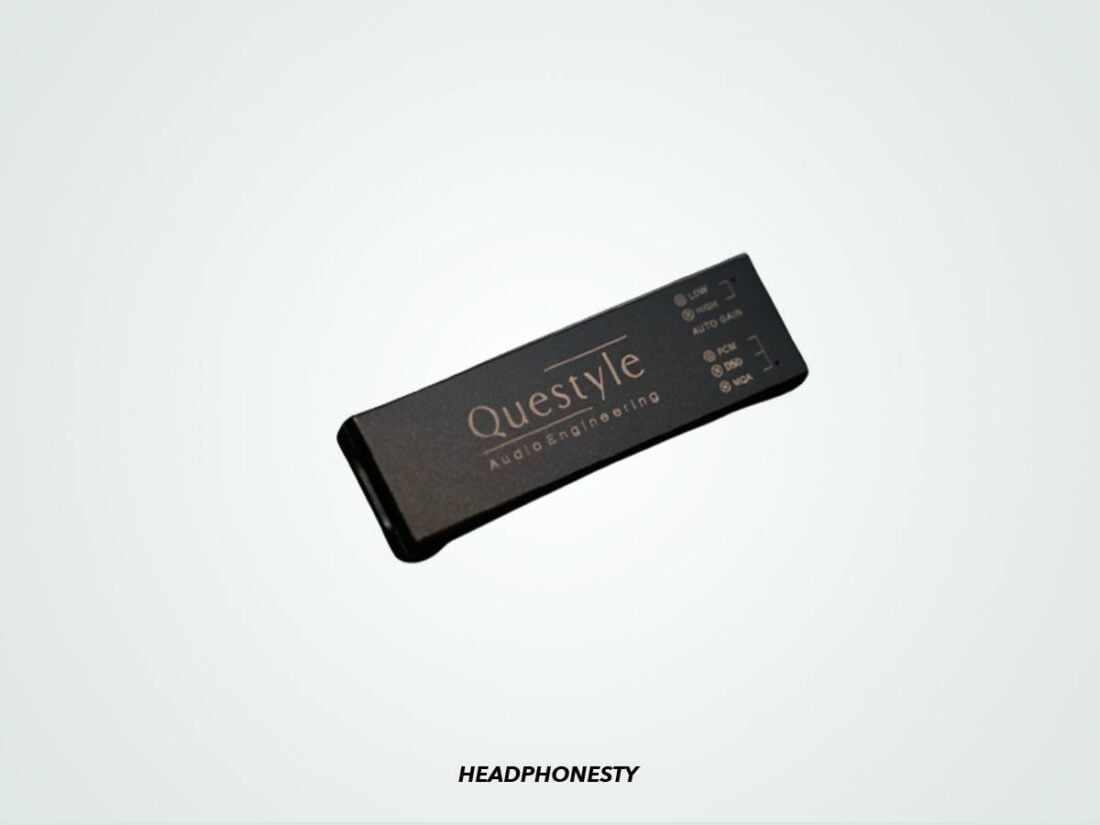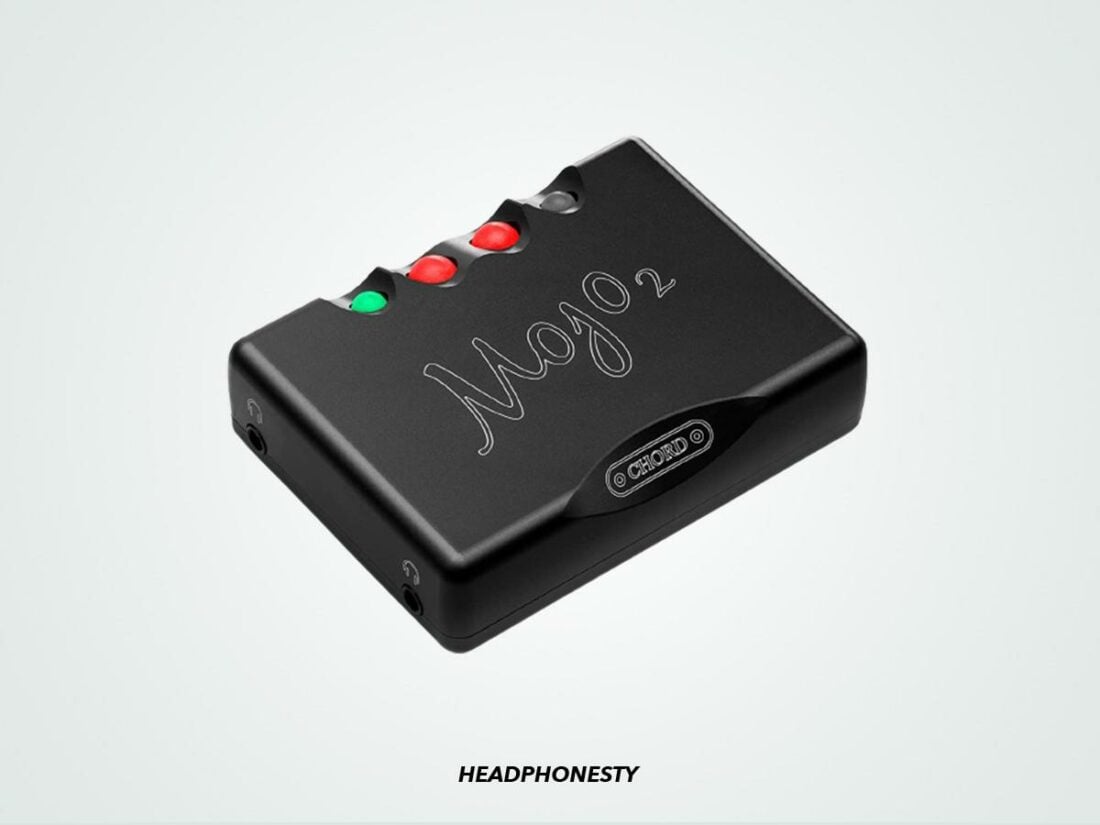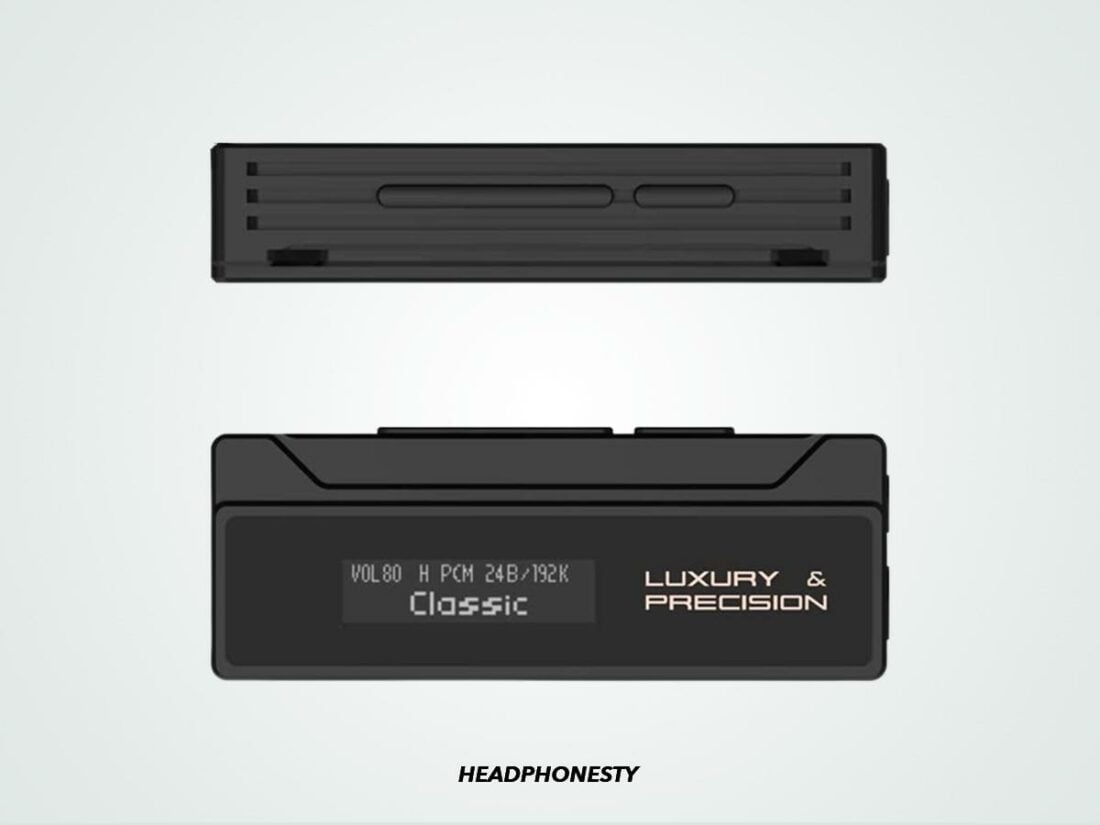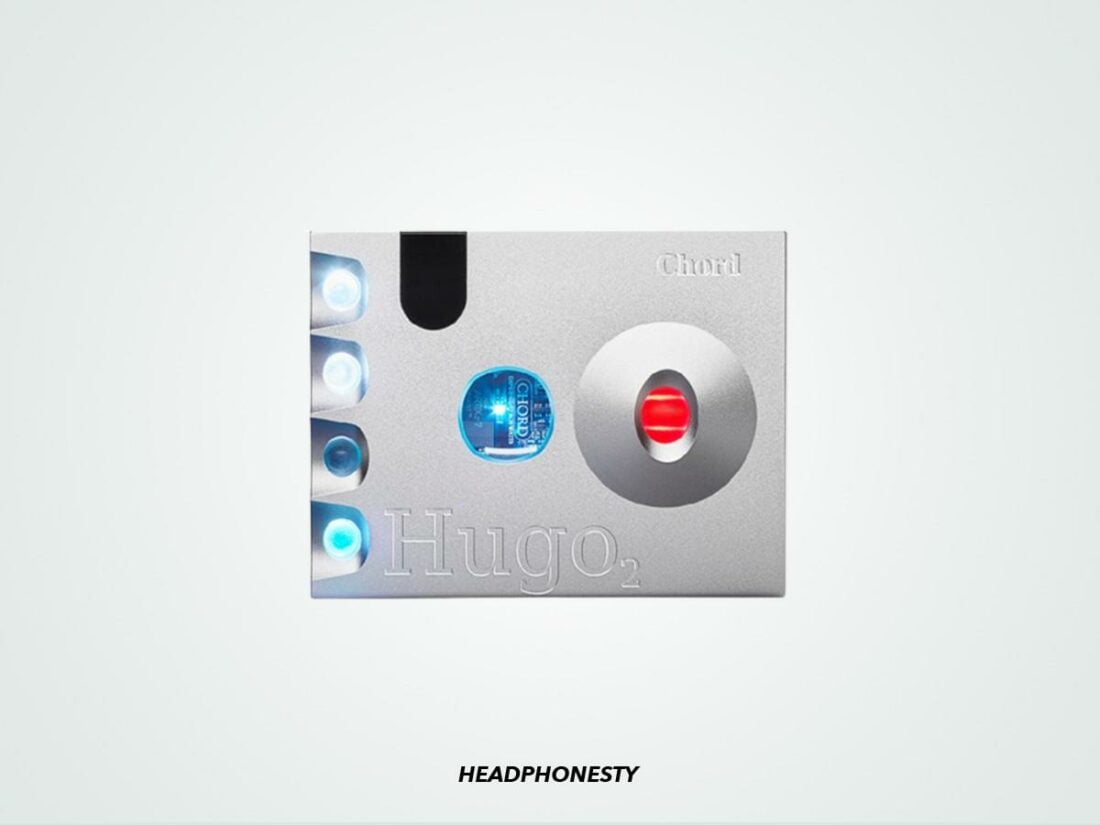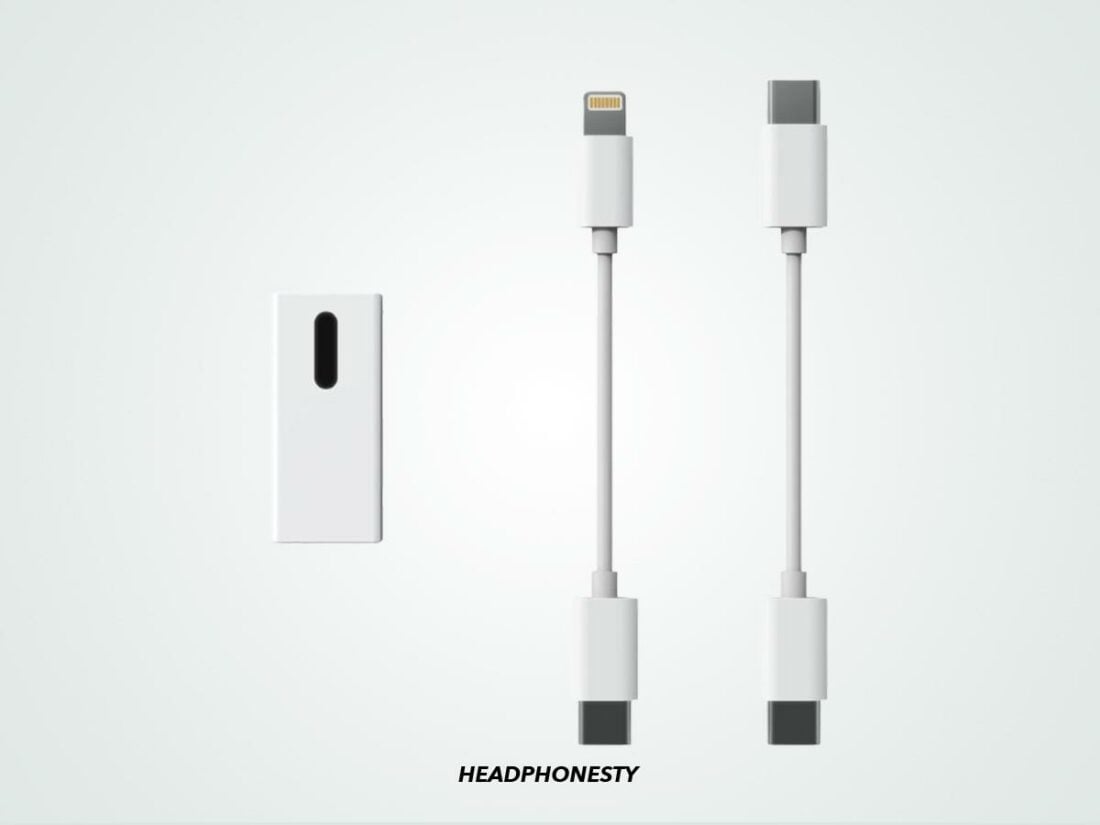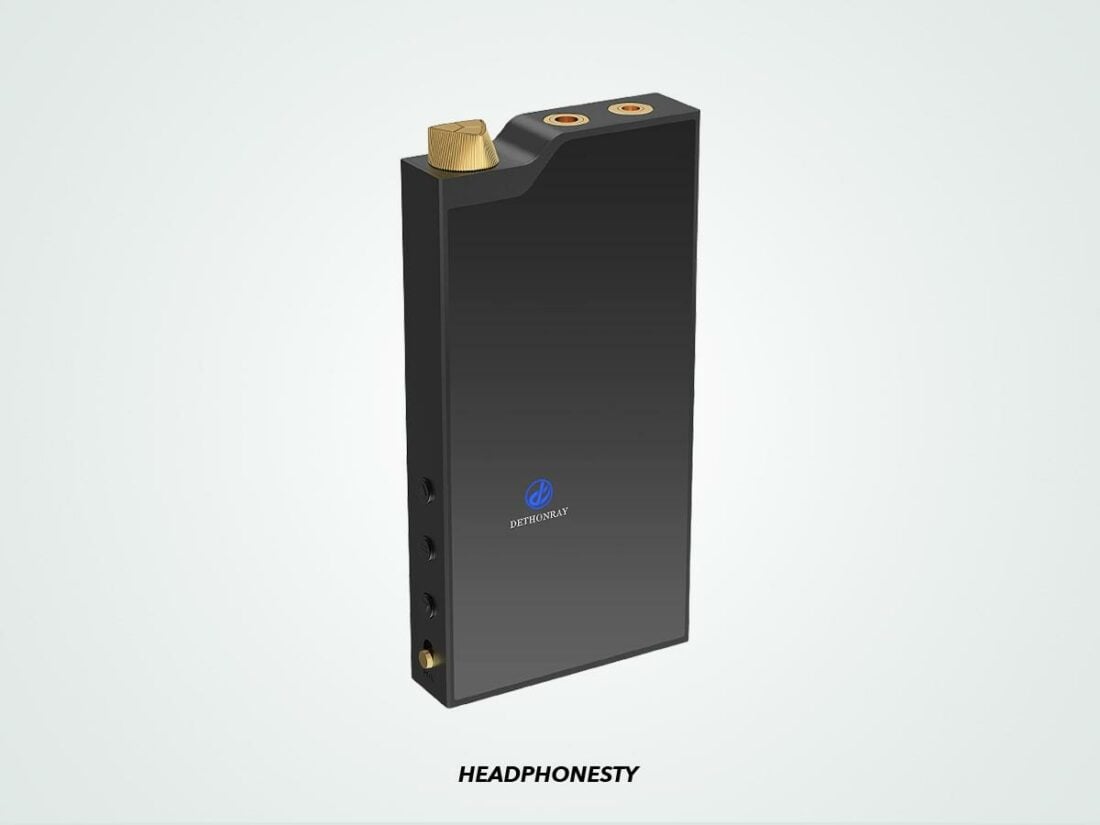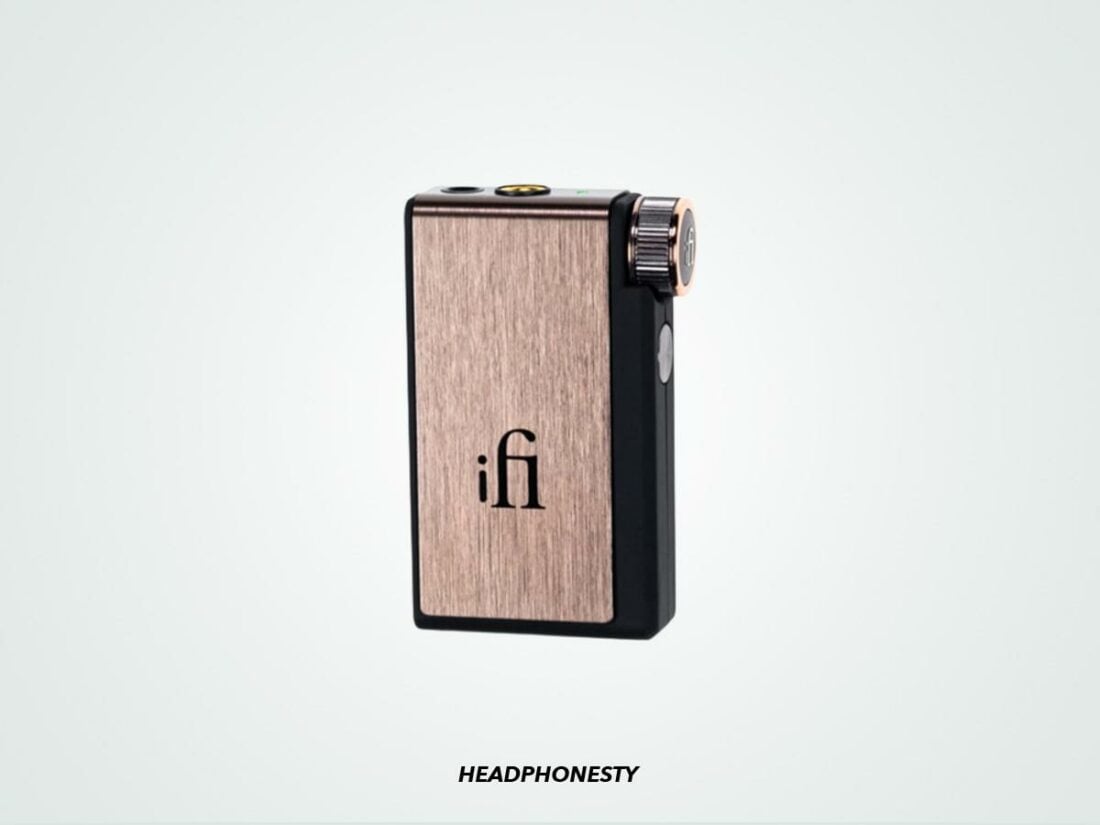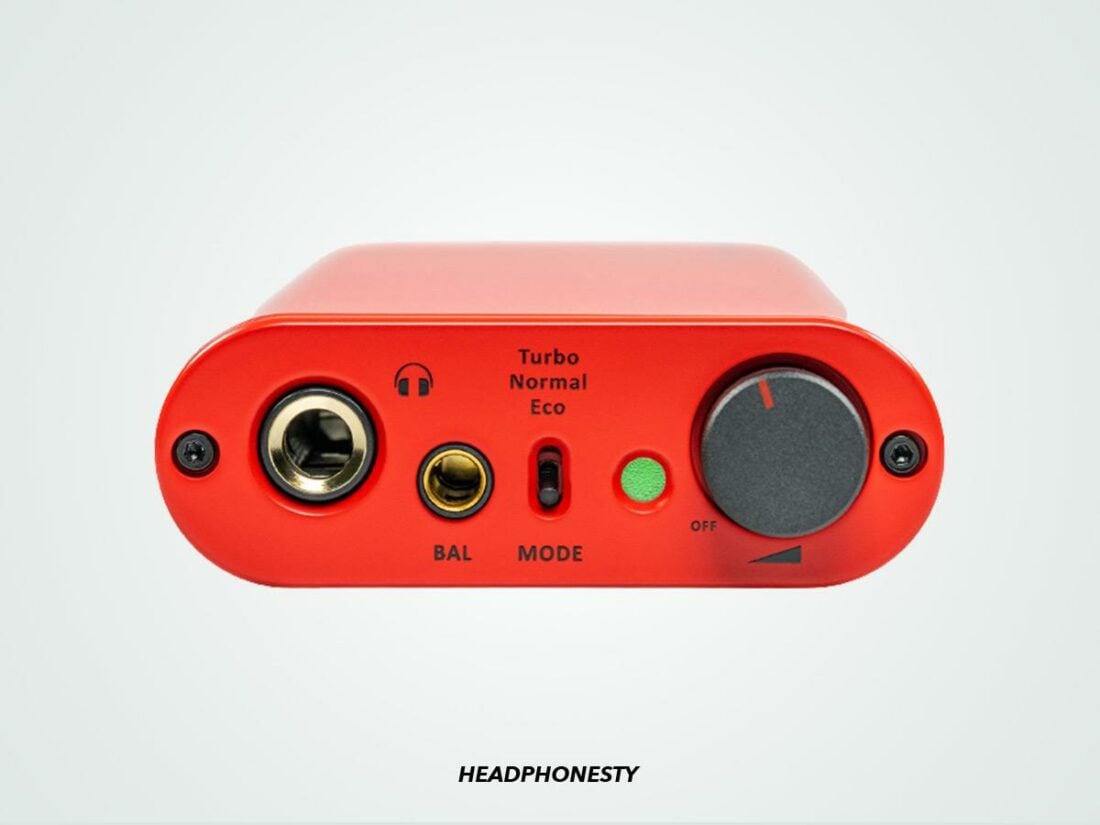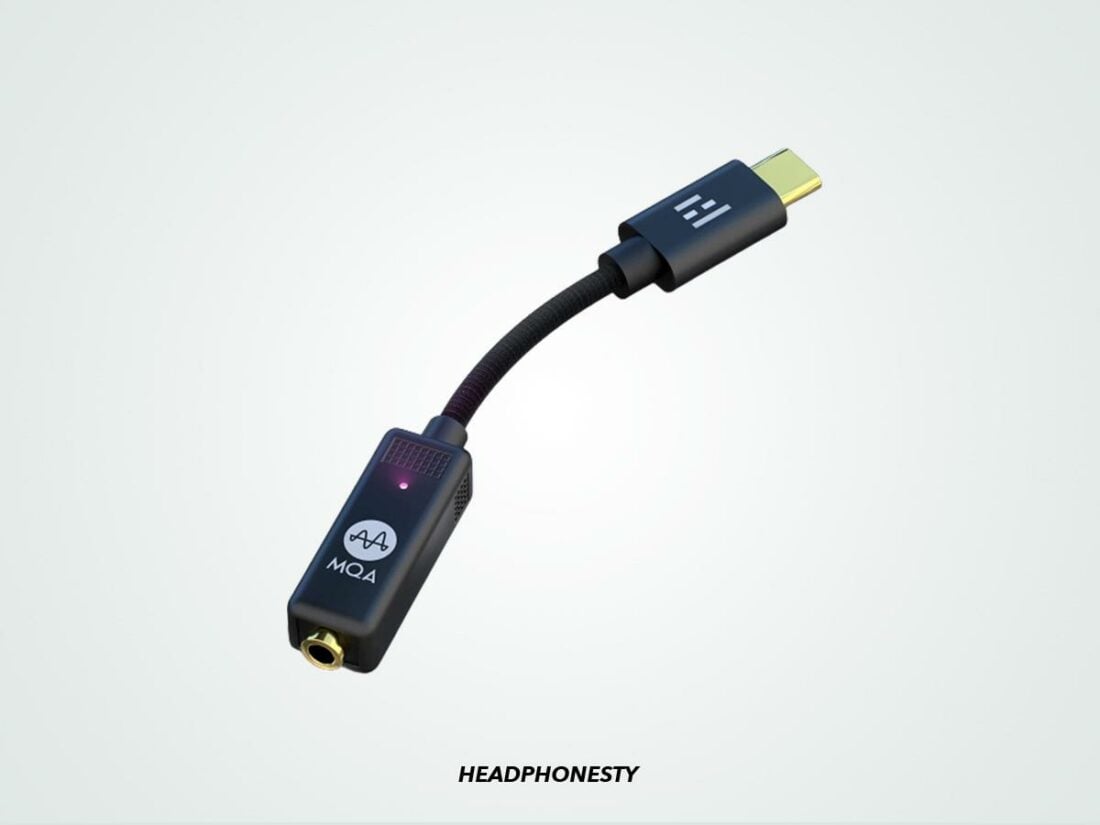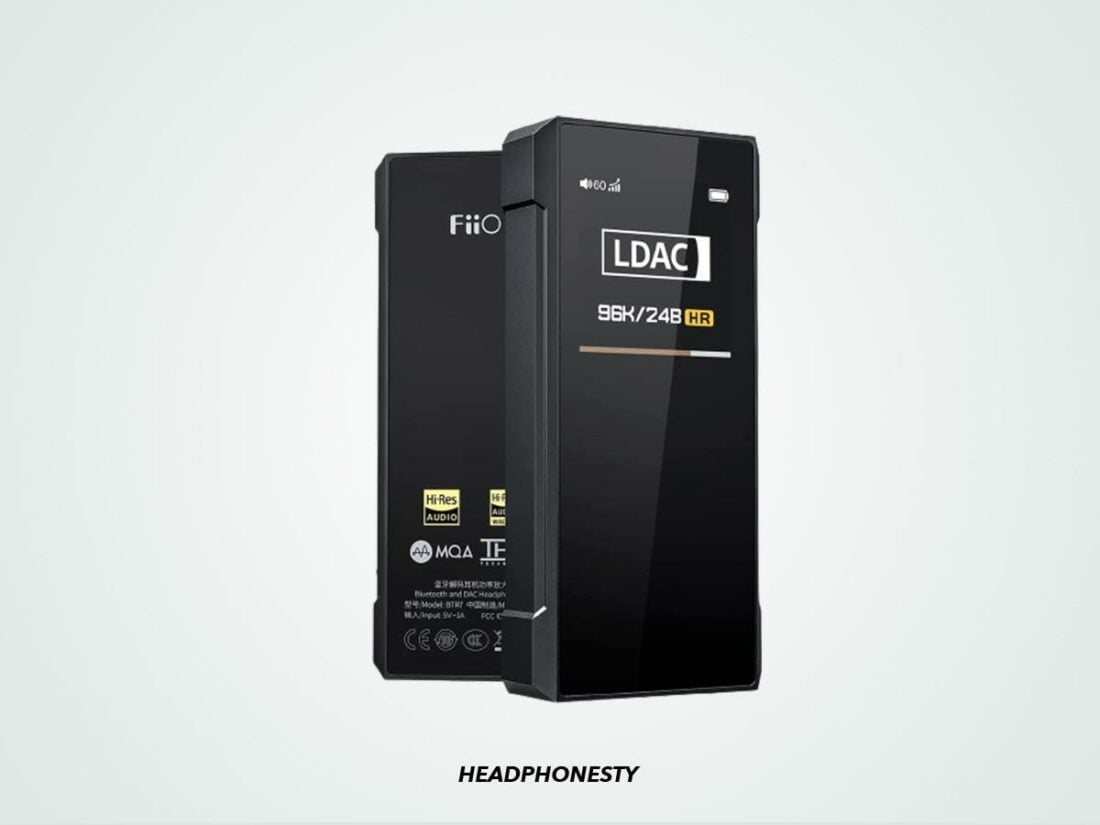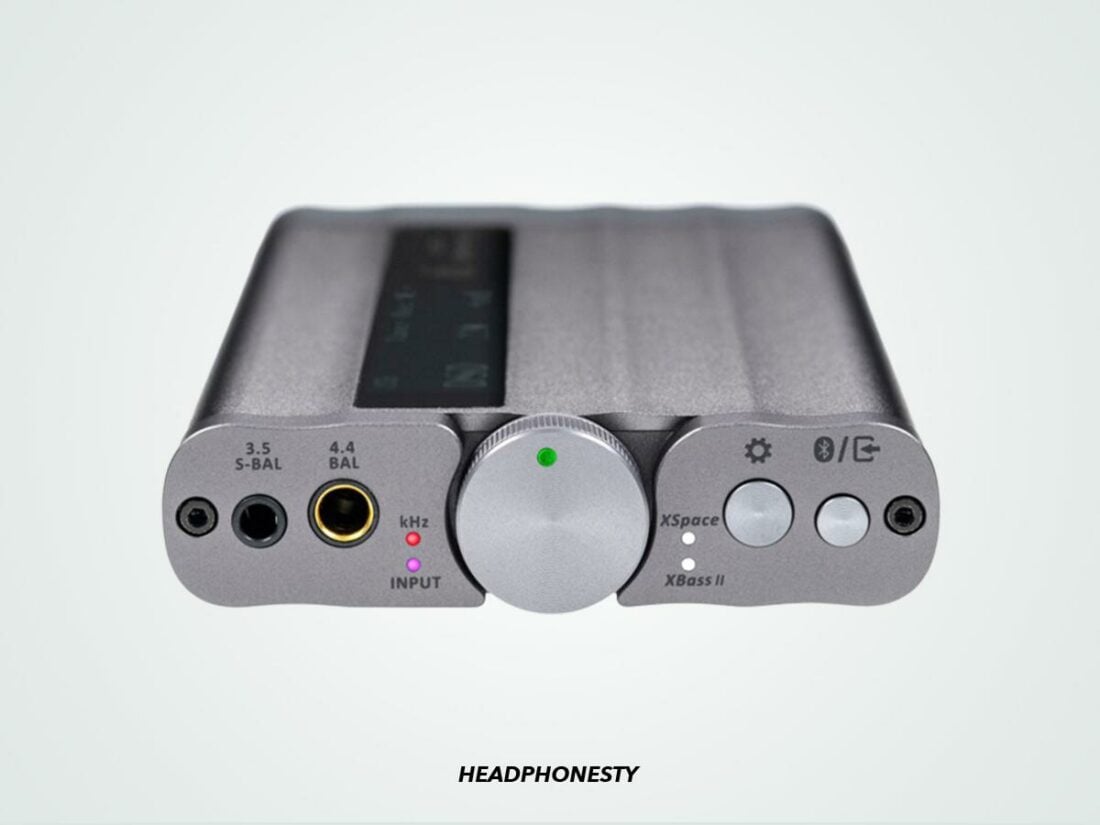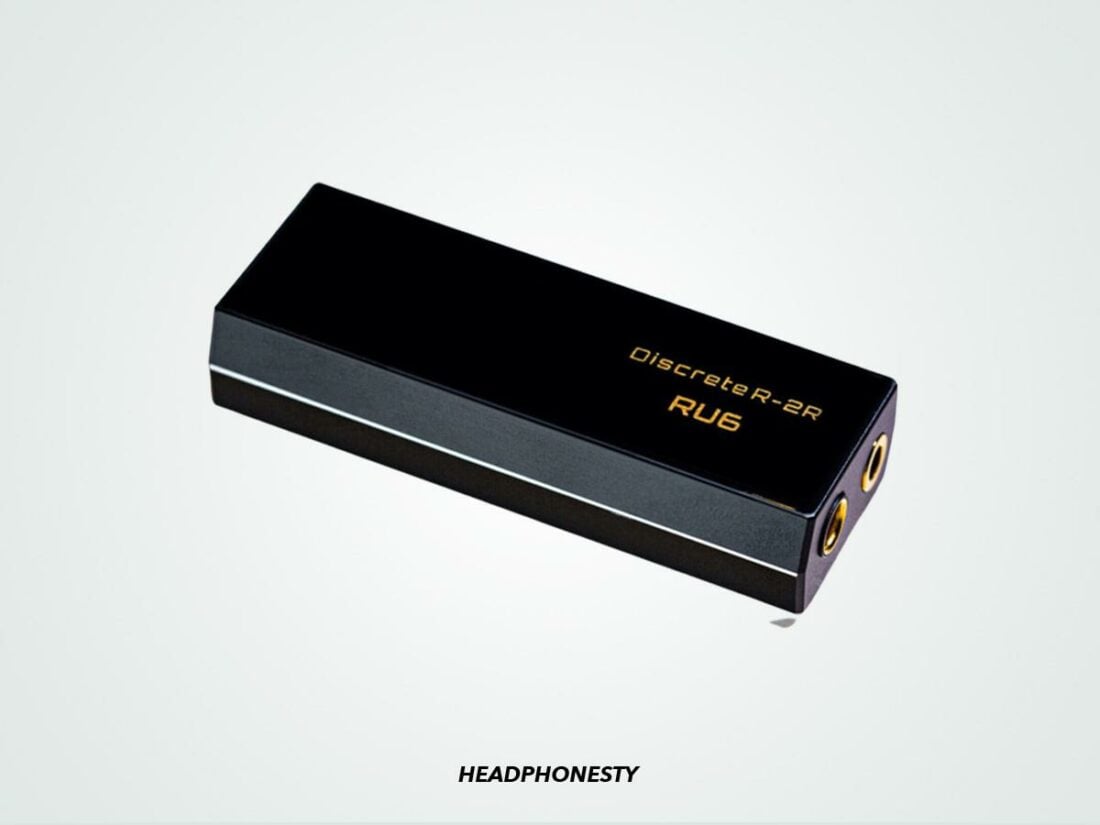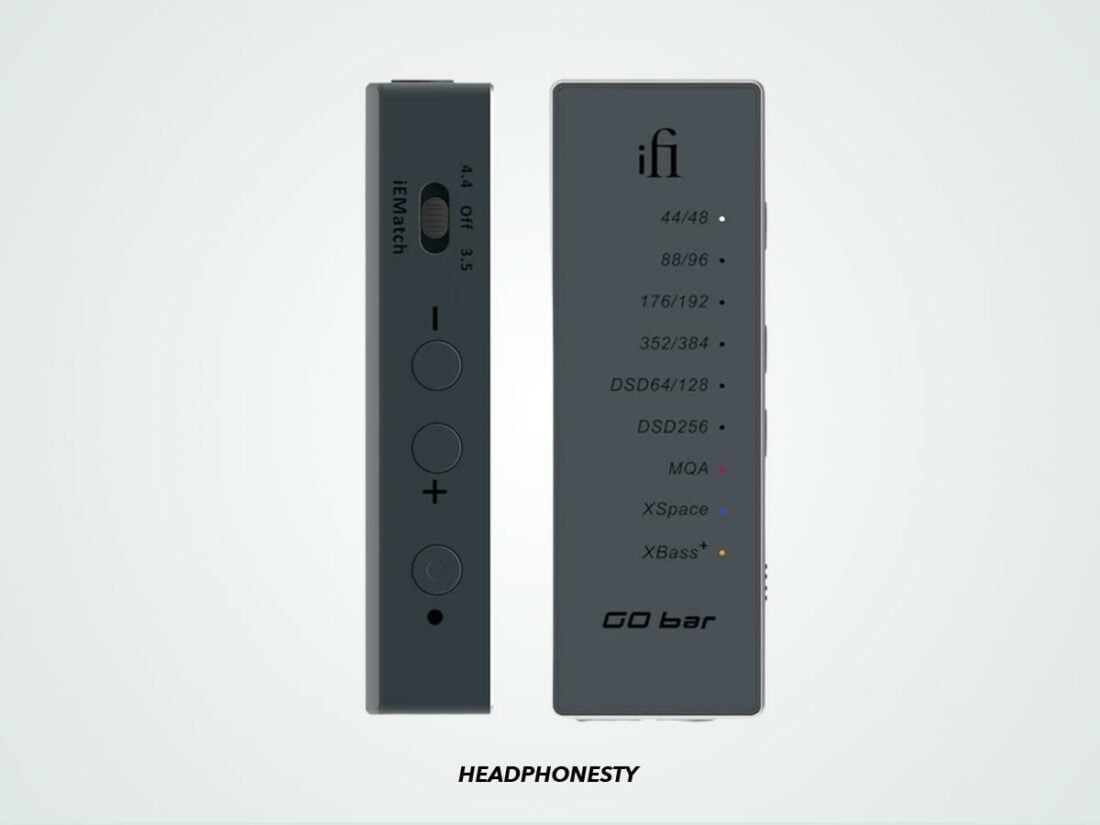A portable DAC/amp is a multi-purpose device. It accepts a digital input, converts it into analog audio, amplifies the signal, and finally outputs the music to headphones. Since we’re talking about portable devices, it also should be small enough to fit into a pocket. Missing headphone jacks from the current batch of phones have also warranted using an intermediate device (or Bluetooth connection) for headphone listening.
How to Pick the Best Portable DAC/Amp
To choose the right portable DAC/amp, you must decide what features are most important to you:
Portability: size and weight? Format support: DSD, MQA, and/or high bit-rate and sample rate? Variety of digital and analog inputs? Power to drive a wide range of headphones? Sound quality? Bluetooth? Internal battery? Price and value? All of the above?
We’re here to help with our recommendations for some of the best portable DAC/amp options and a quick reference guide to review the most important features. Comparing the specifications is essential to making the right choice. Scroll to the right to see the full table ⏩ Here’s our picks for the best portable DAC/amp combos for the year!
Questyle M15
Key features
Max Bit Rate/Sample Rate (Bit/kHz): 32/384 DSD: 256 MQA: Y Bluetooth Input: N Output Power ([email protected]): 70
It’s likely no surprise to anyone who has heard of the Questyle M15 to see it top our ‘best-of’ list for this year. Liquid gold describes the M15 aptly, with musicality meeting technicality. From high sensitivity/low impedance fussy IEMs, all the way to low sensitivity/high impedance beasts, the M15 can handle everything with ease. The build is solid, there’s sufficient power on tap, and it does not get noticeably warm with usage. There are gain settings and single-ended/balanced connectors on offer, and it is hiss-free with a dark background. Technicalities are a major highlight, coupled with a very neutral tuning that does not add unnecessary coloration. Nothing is perfect, although the M15 is very close to achieving it. Some small nitpicks are that there is no independent volume control, the dongle is relatively large, and some rivals pump out slightly more power.
Where to buy
Chord Mojo 2
Key features
Max Bit Rate/Sample Rate (Bit/kHz): 32/768 DSD: 256 MQA: N Bluetooth Input: N Output Power ([email protected]): 600
The Chord Mojo 2 is the long-awaited follow-up to one of our all-time favorite portable DAC/amps. It sports a similar unusual design as the original, but this time, the three large iconic colored marbles are replaced with four smaller spherical buttons. Like other Chord DACs, the Mojo 2 features a custom-coded FPGA processor responsible for the distinctive Chord house sound. The Mojo 2 also features lossless DSP (digital signal processing), an advanced ‘digital tone control’ equalization promising no degradation in sound quality. The new fourth button navigates the menu system, allowing users to adjust mute, crossfeed, button-lock, and tone controls. The Mojo 2 features a USB-c port for data transfer, and the battery charging rate and capacity are improved over the original. Some will be turned off by Chord’s quirky design language, the unintuitive menu system, and the relatively high price. However, the Mojo 2 offers an audio upgrade over its older brother, with greater extension and a more spacious presentation. Detail retrieval is also boosted, and the Mojo 2 sounds exceptionally clean and natural. The first Mojo was great, and the Mojo 2 simply brings more to the table.
Where to buy
Also Good
Luxury & Precision W2
The Luxury & Precision W2 supports 32/384 and DSD256 decoding, with dual CS43198 chips onboard. The battery draw is fairly significant, with the balanced output rated at almost 10x the power of lesser tiny dongle options. Additionally, the W2 features a handy display rarely seen on this sort of device. The greater power of the W2 means that the output has better dynamics and low-end oomph than weaker-powered mini-DAC/amps. This additional headroom is evident with moderately inefficient loads. However, if very long listening sessions with efficient IEMs are your preference, then a lower-powered device may be a better match.
Chord Hugo 2
Key features
Max Bit Rate/Sample Rate (Bit/kHz): 32/768 DSD: 512 MQA: N Bluetooth Input: Y Output Power ([email protected]): 740
The Chord Hugo 2 is designed for both mobile and home use, either with headphones or in a conventional audio system with a line-level output and full-function remote control. The Hugo 2 offers multiple digital inputs (optical, coaxial, and USB) plus extended-range Bluetooth, with high-resolution file playback up to 768kHz and DSD 512 via its USB input. Analog outputs include dual RCA, plus 3.5mm and 6.35mm headphone outputs. Additionally, the Hugo 2 offers a four-function filter (warm, soft, transparent, and incisive) and a digital crossfeed function with three operation modes. Always divisive, users will either love or hate Chord’s distinctive styling and four spherical control buttons, which illuminate with color-coded information. The Hugo 2 generally shows natural tonality but can verge on sharpness with some brighter headphone pairings. It’s a tradeoff for exceptional clarity but may leave some listeners wanting a thicker low-end. Spacious and resolving, the Hugo 2 is a terrific example of what a portable audio device can do.
Where to buy
IKKO Zerda ITM02
Key features
Max Bit Rate/Sample Rate (Bit/kHz): 32/384 DSD: 128 MQA: N Bluetooth Input: N Output Power ([email protected]): 70
If you are looking for a basic and simple DAC dongle, the IKKO Zerda ITM02 is an excellent choice. It supports Apple and Android devices and produces a smooth and warm sound ideal for bright-sounding IEMs. The tone is free of shrillness or digital brightness found in many cheaper DAC dongles. The ITM02 boasts increased bass depth, slightly overshadowing the midrange and treble. Overall, this effect imparts energy and thickens note textures, ideal for EDM and other heavier genres but less beneficial for acoustic or orchestral music. Regardless, the ITM02 is a terrific and affordable start to portable HiFi.
Where to buy
Dethonray Pegasus SG1
Key features
Max Bit Rate/Sample Rate (Bit/kHz): 24/96 DSD: N MQA: N Bluetooth Input: Y Output Power ([email protected]): 263
The Dethonray Pegasus SG1 is unlike any other portable DAC/amp out there. Forgoing USB connectivity entirely, the SG1 is designed from the ground up to be Bluetooth only. Supporting the highest quality aptX HD and LDAC Bluetooth codecs, the SG1 brings the best wireless features to any pair of headphones. It also boasts a dual high-density battery customized power system designed to separate digital and analog power to eliminate digital circuit noise from the source. The build quality is flawless, and the manual volume knob is a pleasure to use. It uses Dethonray’s ‘Touch & Feel’ algorithm to make the volume adjustment smooth and accurate. Users can select between two different firmware options (entitled Rhapsody – vigorous and flamboyant, and Serenity – exquisite and silky), developed to present different timbral tunings. The overall listening experience is more like a full-sized desktop device, with excellent dynamics and great overall sound quality. However, there may be a slight background hiss with efficient headphones and IEMs, although it is unnoticeable when music is playing.
Where to buy
Also Good
iFi GO blu
The iFi GO blu lives up to iFi’s standards as a great sounding and astoundingly feature-packed device, but this time contained in a very tiny (27g), rubber and aluminum package. Eschewing typical volume buttons, the GO blu sports a prominent multi-function potentiometer knob on the side. It also features both single-ended (3.5mm) and balanced (4.4mm) outputs, USB-C charging and data port, Bluetooth pairing/XBass/XSpace button, microphone, and power switch. The GO blu is a do-it-all device, from wired DAC to Bluetooth receiver, it can even turn your wired headphones into a wireless headset. The latest Bluetooth codecs are supported, including SBC, AAC, aptX Adaptive, aptX HD, LDAC, and LHDC. The small size may make you underestimate the driving abilities of the GO blu, but with 245mW (@32 Ohms) on hand via the balanced output, it can handle most moderately efficient headphones and IEMs.
iFi iDSD Diablo
Key features
Max Bit Rate/Sample Rate (Bit/kHz): 32/768 DSD: 512 MQA: Y Bluetooth Input: N Output Power ([email protected]): 4980
The iFi iDSD Diablo sports a Ferrari red paint job, and boasts a shockingly high output power (~5W @32Ohms). With a maximum power (@32 Ohms) of 4.98W (balanced) and 2.5W (single-ended), the Diablo is in a class of its own as far as portable amplifiers. Think of Diablo as a battery-powered, high-end desktop DAC/amp you can take on the go. The Diablo is a TOTL device and is fittingly bundled with an outstanding collection of accessories including a USB iPurifier3 (limited to the first 1000 Diablos sold), iPower supply, and iTraveller case, not to mention cables, adapters, etc. It uses dual Burr-Brown DAC chips mated to a new 16-core XMOS chip to handle bit-perfect decoding up to PCM 768 and DSD 512. iFi has jumped with both feet into MQA support and created the optional GTO digital filter in conjunction with the MQA team.
Where to buy
Helm Audio BOLT
Key features
Max Bit Rate/Sample Rate (Bit/kHz): 32/384 DSD: 128 MQA: Y Bluetooth Input: N Output Power ([email protected]): 50
The Helm Audio BOLT offers fantastic build quality, MQA and THX certification, small size, high-power output, and clean, clear sound. What’s not to love? Frankly, the only missing things are a replaceable cable and a Lightning-to-USB adapter for iOS devices. Of course, if you aren’t an Apple user, this will not impact you. While the BOLT specs state that it handles sample rates up to 384kHz, it is limited to 96kHz for everything but MQA playback. Unlike other mobile MQA-DAC designs, the HELM BOLT physically isolates the DAC from the USB connector for improved performance and uses a three-oscillator design for superior frequency lock. No, it’s not a replacement for a full-sized headphone amplifier for extremely hard-to-drive headphones. But it’s certainly good enough to drive nearly any pair of IEMs. It works excellently and sounds superb for this type of device.
Where to buy
FiiO BTR7
Key features
Max Bit Rate/Sample Rate (Bit/kHz): 32/386 DSD: 256 MQA: N Bluetooth Input: Y Output Power ([email protected]): 320
Building on the success of the BTR5, the FiiO BTR7 features a new THX AA-28 amplifier stage, larger battery, and updated Bluetooth chipset – albeit at about twice the price of the 5. The higher capacity battery offsets the power-hungry THX amplifier, and battery life ranges from about 6-9 hours (about the same as the BTR5), depending on volume and output choice. The physical design is clean and simple, with buttons on the side and a crisp OLED display on the front. An included case offers protection from scratches and fingerprints, as the shiny, larger body is prone to both. There’s plenty of power on hand for most headphones (160mW SE, 320mW balanced), and the FiiO Control application allows for even more output power using the “Boost BAL” mode. The BTR7 is a pleasure to use and listen to, with a slight low-frequency boost to its sound signature. This yields a warm, full sound that works great with most headphones and can tame some sharper-sounding pairs. You’ll swear you have a good desktop system in your pocket.
Where to buy
Also Good
iFi xDSD Gryphon
The iFi xDSD Gryphon is iFi’s new jack-of-all-trades portable device: high bit-rate support plus DSD and MQA playback, combined with Bluetooth, single-ended and balanced outputs, OLED display, XSpace, XBass II, bass + presence switch, and IE Match circuitry. Think of it as the big brother to the remarkable GO blu, the Gryphon is the evolution of the xDSD. As is common practice for iFi, the Gryphon uses a Burr-Brown DAC chipset paired with the latest Bluetooth 5.1 technology supporting LDAC and aptX HD codecs. Output power isn’t quite up to the level of their Signature devices, let alone the Diablo, positioning the Gryphon somewhere between the GO blu and the more powerful devices. This somewhat limits compatibility with more demanding headphones and IEMs.
Cayin RU6
Key features
Max Bit Rate/Sample Rate (Bit/kHz): 24/384 DSD: 256 MQA: N Bluetooth Input: N Output Power ([email protected]): 213
Those curious about resistor ladder DACs will take note of the affordable Cayin RU6. The RU6 is Cayin’s first foray into the dongle USB DAC/amp market, and they’ve created something new with a 24-bit discrete R-2R DAC circuit, balancing low power consumption with high-quality audio. Listeners can toggle oversampling on and off, enabling and disabling the digital filters. Oversampling mode increases resolution and sample rate while decreasing noise. With oversampling off, phase, artifacts, and jitter are reduced, and coherency is improved. The overall sound signature is very smooth, focusing on warmth and immersion at the expense of complete clarity and neutrality. Some users report that the low frequencies can lack precision, but when paired with the right headphones or IEMs, the RU6 will provide a full-bodied presence that is extremely enjoyable to listen to. The RU6 brings an analog sound into a digital world.
Where to buy
Check Price on Official Website
iFi GO bar
Key features
Max Bit Rate/Sample Rate (Bit/kHz): 32/384 DSD: 256 MQA: Y Bluetooth Input: N Output Power ([email protected]): 475
iFi released two versions of the iFi GO bar, the standard ‘GO’ and the limited-edition ‘Gold’ bar, a premium-priced, limited-edition, gold-plated copper version of the original. Both feature the same internal 32-bit Cirrus Logic DAC and 16-core XMOS controller. iFi touts the GO bar as the most powerful portable headphone amp of its size. Like most iFi products, the GO bar supports most technical standards, 32-bit/384kHz, DSD 256, and full MQA decoding. Additionally, it features both single-ended and balanced outputs. The GO bar’s bottom is adorned with LED indicator lights, showing volume, sample rate, and XBass and XSpace settings. Unfortunately, the low-contrast labels can be somewhat difficult to read. The iFi GO bar has a clean, crisp sound signature and, by default, does not emphasize the lower frequencies. This gives it a lively and resolving presentation that listeners can tune to their liking using the XBass and XSpace controls.
Where to buy
